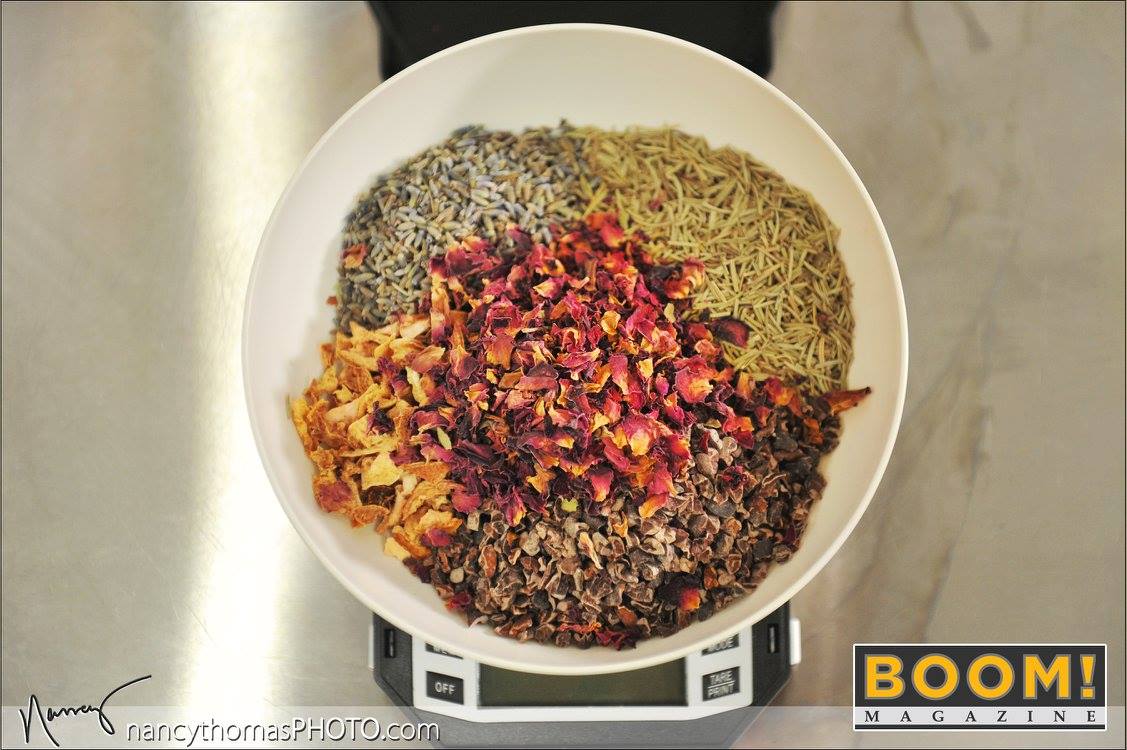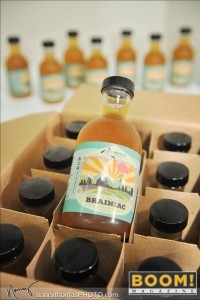Tribucha Kombucha

By Russell Pinkston & Anne Barrington
In the last several years, kombucha has become one of the most trendy and least understood beverages on the market. Hailing from the ancient East (and as far North as Russia) it has been touted for generations as a sort of miracle elixir to cure everything that ails you, from diabetes to – ahem – a lackluster libido. While most of these health claims surrounding kombucha are very likely overblown, the drink does inherently possess certain probiotic and antioxidant properties which, in moderation, can help regulate digestive health and bolster your immune system.
So, to better understand this mostly misunderstood beverage, we took a trip to the Triangle’s only local, organic kombucha brewers – Tribucha kombucha, out of N. Raleigh – to get a breakdown of the hows and whys of kombucha: what it is, how it’s made, and what it can do for you. We spoke with Tribucha’s founders, Jonathan York and Adrian Larrea, about the recent popularity of this drink and its many health claims. After a few taste tests, we were completely sold. Once you get your hands on the stuff, we’re sure you will be too.
Kombucha tea originated in Asia over 2,000 years ago, and is made from a sweetened tea colonized with bacteria and yeast. kombucha has a long history in countries where fermentation of foods was a matter of survival through long winters devoid of fresh produce. Russia had its own version called Kvass, and other countries like Germany had a solid user base during the last century.
The etymology of the name kombucha is fairly uncertain, the most likely source being a sort of confused misnomer taken from the Japanese seaweed tea of the same name (kombu-cha translating literally as seaweed tea). But don’t let this give you the wrong impression, there is most definitely no seaweed in the kombucha we’re talking about. It is more likely that this name stems from some westerner’s misunderstanding of what they were actually drinking. The kombucha we are referring to in the scope of this article is, instead, a kind of fermented, carbonated tea that is brewed in a process that is somewhat similar to the way beer is brewed, though it contains almost no alcohol (make sense yet?). Let’s break it down further.

But what takes kombucha a step further than any regular old tea is that this base is then fermented with the addition of sugar and what’s known as a SCOBY (symbiotic colony of bacteria and yeast), which starts the fermentation process and gives this carbonated brew its purported health benefits. To put it as simply as possible, the yeast in the SCOBY will convert the sugar into alcohol just like it would in beer. But then, the bacteria in the SCOBY will act as a sort of “mother of vinegar” to then convert that alcohol into acetic acid, which gives kombucha it’s slightly sour, vinegary flavor. Tribucha uses an organic SCOBY which they collect and re-propagate for every batch.
Although research has been done on kombucha in both Germany and Russia, very little research has been done here in the United States. Since the drink cannot be patented, there is little incentive for expensive studies; however, ample research has been done on the many ingredients in kombucha.
Containing several minerals, live enzymes and probiotics, B and C vitamins, antioxidants, concentrated organic acids, and vinegar, kombucha boasts low sugar-content (about 30 calories per 8oz), and only a small trace of alcohol (it is sold as a non-alcoholic drink). This tasty brew claims many health-promoting qualities, not by being a magic cure-all elixir, but by giving the body the essential ingredients to promote health and healing.
Some of the health benefit claims are:
1. Detoxification
kombucha is rich in live enzymes and bacterial acids that reduce stress on the liver and pancreas. It also helps restore glutathione levels which help reduce liver toxicity. Glucuronic acid binds toxins entering the liver and expels them through the kidneys.
2. Reduced joint pain
kombucha contains glucosamine, which stimulates the production of hyaluronic acid in the joints’ synovial fluid which preserves lubrication and elasticity while preventing free radical damage and pain. This also preserves the production of collagen both in the joints and the rest of the body. Collagen is furthermore important for skin health and can help prevent wrinkles.
3. Improved digestive health
Because it is naturally fermented, the probiotics in non-pasteurized kombucha aid digestion by improving the microbiome, the gut flora responsible for maintaining healthy digestion. The digestive enzymes help break down proteins and saccharides. This may help conditions of constipation and diarrhea, while antioxidants and phenols present in kombucha may help protect the mucus layer in the stomach, alleviating gastric ulcer pain.
I remember the first time I tasted kombucha tea, an effervescent, slightly sweet, tangy drink reminiscent of champagne mixed with cider and a splash of tea, with a slightly vinegary odor. Adrian Larrea, one of Tribucha’s founders, joked with us about what they call the “kombucha face,” or the look of puckered surprise people often express when trying kombucha for the first time. While it’s true that kombucha can be an acquired taste for some, after sampling the different flavor offerings from Tribucha, it’s not too difficult to understand why this drink has experienced such a surge in popularity.
Tribucha Kombucha takes a craft approach to brewing their kombucha. They take great care to not only ferment the tea in such a way that maximizes the drink’s health benefits, but to also brew the initial tea using an array of delightfully flavorful ingredients that make the drink rather delicious, even for those who are trying it for the first time. They currently have three different flavors in their lineup.

Their second flavor, Cafe Kombucha, is fairly unique in that they actually brew coffee beans in with a host of other ingredients (such as cacao, cinnamon, grapefruit and orange nibs, dandelion root, and elderberries). It’s a wonderful coffee flavor that’s enhanced by the presence of cinnamon and cacao coming together in the brew.
Their third flavor offering, Flowers of Life, is a bouquet of tangy, aromatic flowers that come together to create something reminiscent of a fruit punch, thought there’s actually no fruit added. It’s made with rose hips, rose buds, rose pedals, hibiscus, lavender, and red clover. It’s a very calming mixture that serves to re-center your body, soul, and taste buds.
Tribucha, at present, is a fairly small operation that is growing from the ground up, trying to balance their production capabilities with their high demand. They produce around 300 gallons every 10 days or so, which is being quickly devoured by a thirsty horde of loyal followers. [list of available locations]
Since visiting with Tribucha, kombucha has become one of our favorite beverages here at Boom! It is a convenient soda replacement (in moderation) for parents trying to get their children off of overly-sweetened colas, as well as a great probiotic supplement for adults looking to regulate their digestive system. For people of all ages, it is a delicious treat that can be as equally rewarding to your body as it is to your taste buds. It’s as good to you as it is for you.
www.tribucha.com
facebook.com/drinktribucha
twitter.com/drinktribucha

